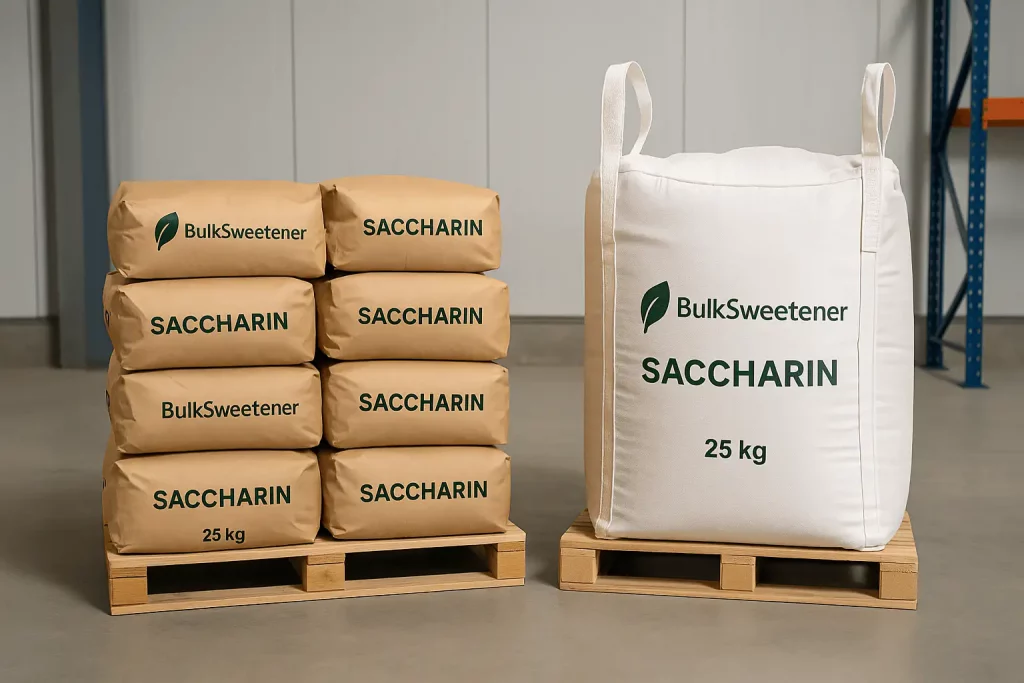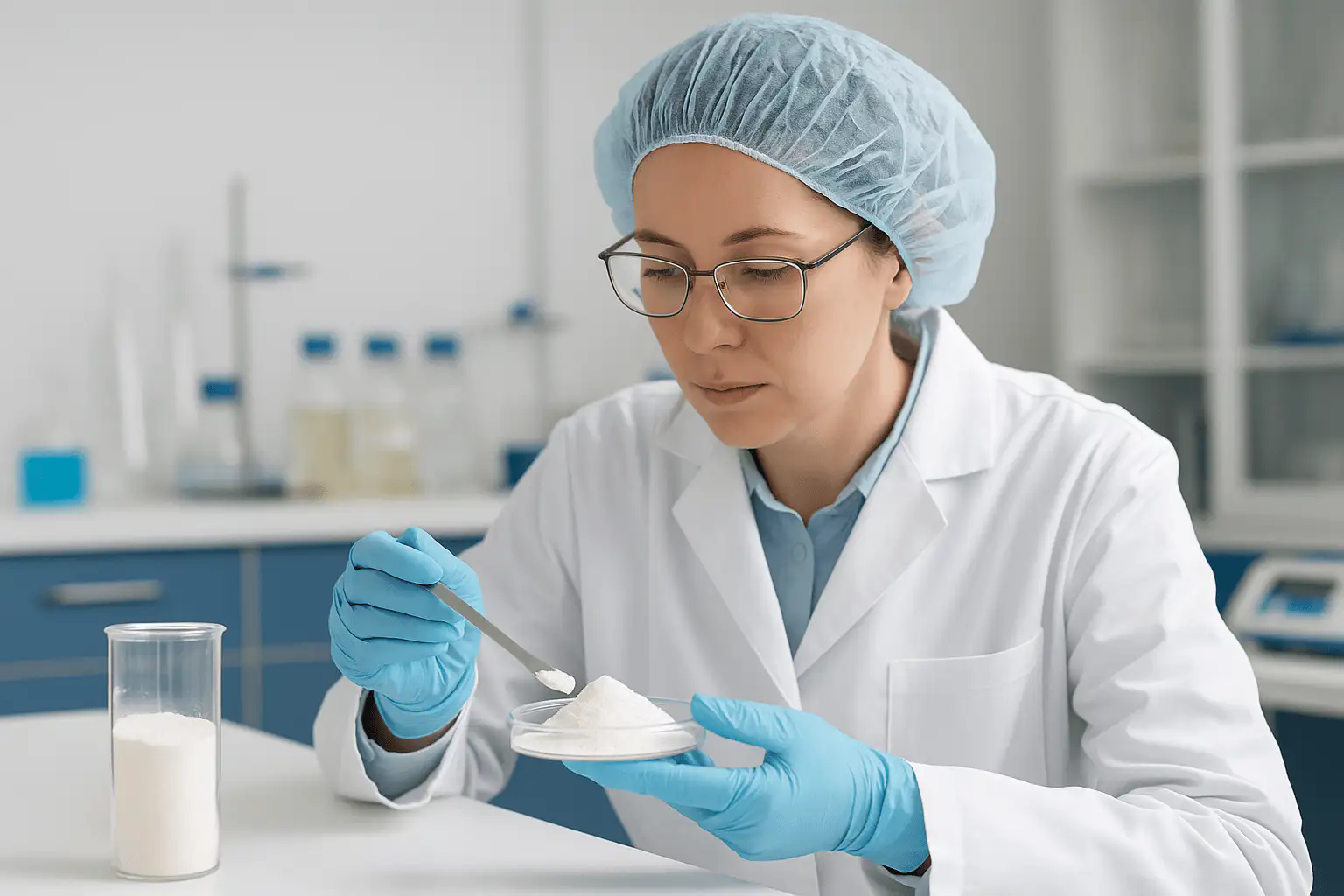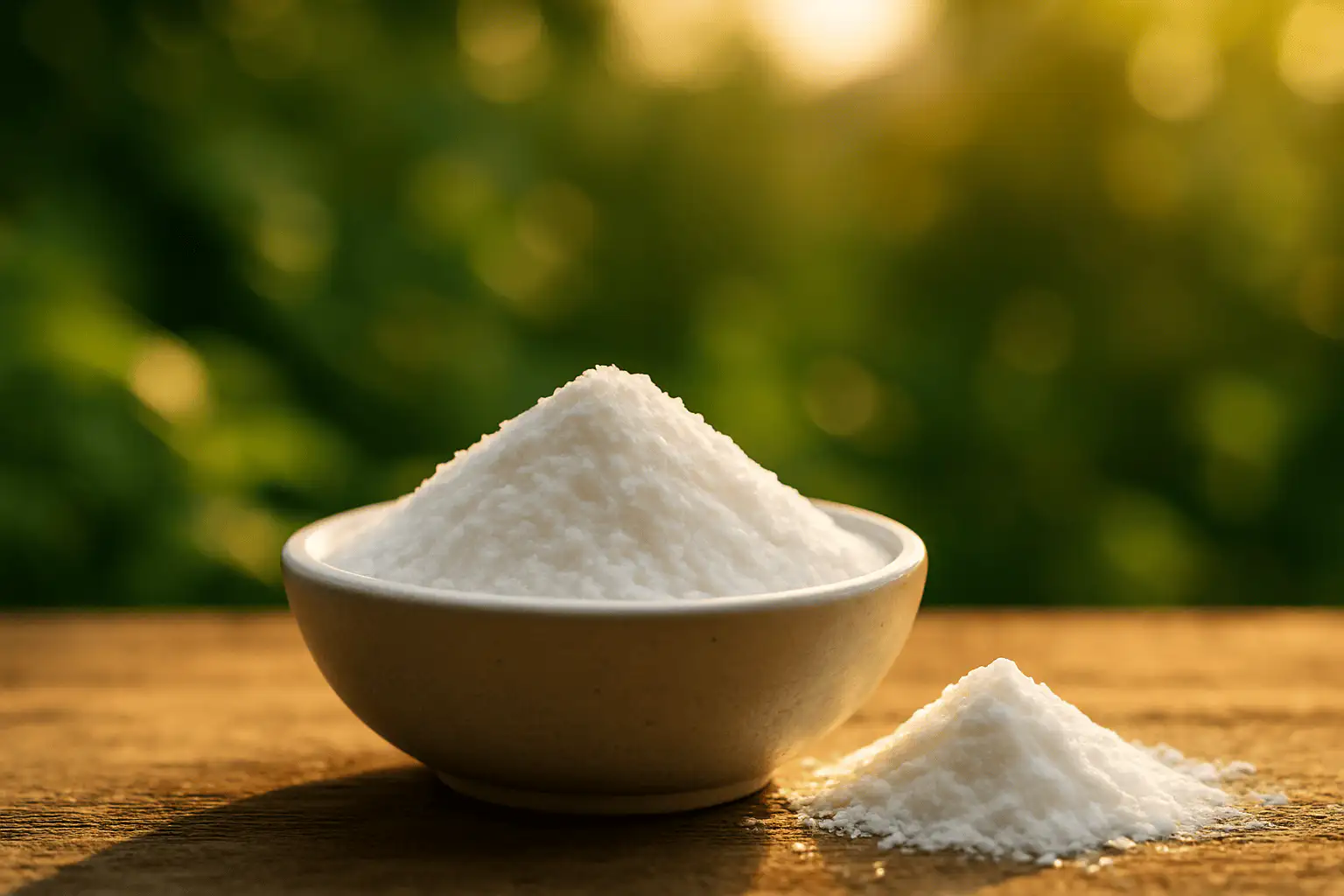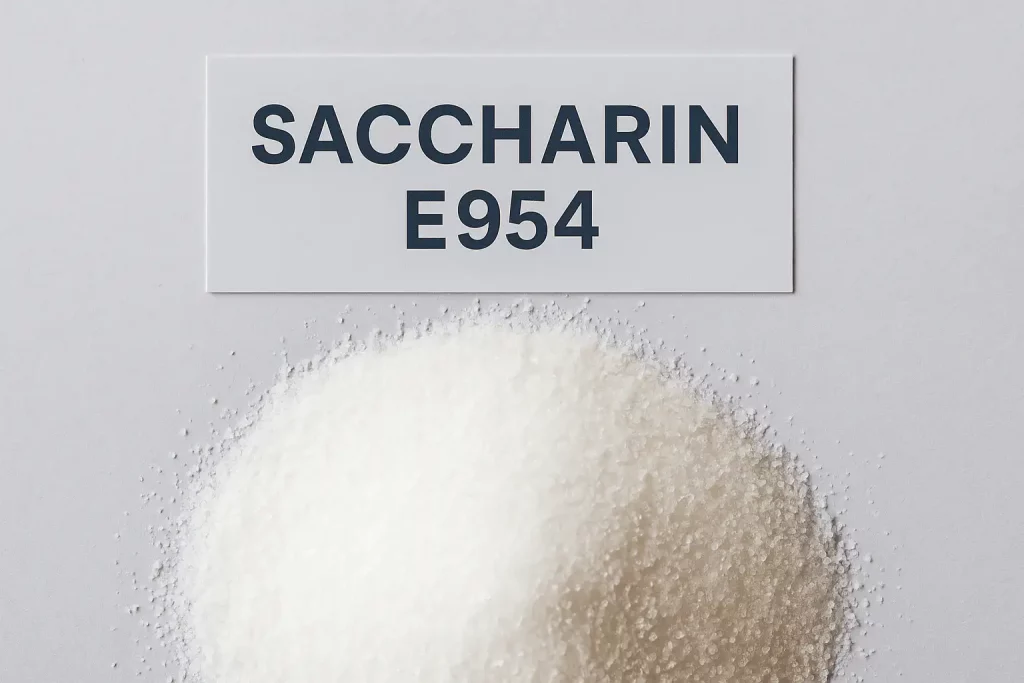Artificial sweetener saccharin (E954) in bulk Para la industria: calidad constante y suministro confiable
Comparing artificial sugar saccharin y saccharin sweetener for beverages, tabletop, confectionery, or pharma? We supply bulk saccharin (E954)—typically sodium saccharin—with tight PSD, very high solubility, and heat/pH stability. Ask for saccharin sugar grades by mesh, documentation (COA/TDS/SDS), and guidance on cyclamate + saccharin systems (availability depends on country). Consistent lots, batch traceability, and reliable lead times for multi-site production.


Soporte técnico de formulación

Precios competitivos

Sabor natural

Trazabilidad completa del lote
Los riesgos of buying saccharin sweetener (E954) without standards
- Irregular sweetness in cold systems
- Off-notes from impure lots (metallic/lingering)
- PSD drift → variable dissolution and dusting
Calificamos las fuentes, controlamos la PSD mediante tamizado/molienda calibrada y controlamos la humedad según las especificaciones. Cada bulk saccharin lot is QC-checked (assay, pH, moisture, heavy metals, micro) and released with COA/TDS. Result: clean dissolution, predictable sweetness, fewer reworks.

Key Technical Specifications — Bulk Saccharin (E954)
| Categoría | Especificación | Detalles |
|---|---|---|
| Química | Assay (Saccharin) | ≥99.0% on dry basis (Food grade; FCC/USP/EFSA compliant) |
| Nombre químico | 1,2-Benzisothiazol-3(2H)-one-1,1-dioxide | |
| Identificación química | CAS 81-07-2 · E954 | |
| Dulzura relativa (vs. sacarosa) | ≈300–500× sweeter than sucrose (depending on concentration and medium) | |
| pH (1% aqueous solution) | ~5.0–7.0 | |
| Valor energético | Essentially 0 kcal/g (non-nutritive sweetener) | |
| Físico | Apariencia | White crystalline powder |
| Odor / Taste | Odorless; very sweet taste, may exhibit slight bitter/metallic note at high concentration | |
| Pérdida por secado (humedad) | ≤0.2% | |
| Residuo de ignición (cenizas) | ≤0.2% | |
| Solubilidad en agua (20 °C) | ~0.3 g/100 mL (sodium saccharin: highly soluble; ~50 g/100 mL) | |
| Estabilidad | Estabilidad térmica | Stable up to ~225 °C; suitable for baking and pasteurization |
| pH stability | Stable in acidic and neutral conditions; may degrade slowly in strong alkaline solutions | |
| Light sensitivity | Stable under normal light exposure | |
| Shelf life | Minimum 5 years under dry, ambient storage conditions | |
| Calidad | Alérgenos | No se espera ninguno (libre de gluten, soja, frutos secos y lácteos) |
| Estado de OGM | Sin OGM | |
| Metales pesados | Cumple con los límites de calidad alimentaria (por ejemplo, Pb < 1 mg/kg) | |
| Microbiológico | Meets FCC/EFSA food-grade microbiological standards | |
| Origen / proceso | Produced by chemical synthesis from toluene or phthalic anhydride derivatives via sulfonation and oxidation, followed by purification and crystallization | |
| Documentos | COA, TDS, MSDS disponibles a pedido | |
Key Technical Specifications — Bulk Saccharin (E954)
| Categoría | Especificación | Detalles |
|---|---|---|
| Química | Assay (Saccharin) | ≥99.0% on dry basis (Food grade; FCC/USP/EFSA compliant) |
| Nombre químico | 1,2-Benzisothiazol-3(2H)-one-1,1-dioxide | |
| Identificación química | CAS 81-07-2 · E954 | |
| Dulzura relativa (vs. sacarosa) | ≈300–500× sweeter than sucrose (depending on concentration and medium) | |
| pH (1% aqueous solution) | ~5.0–7.0 | |
| Valor energético | Essentially 0 kcal/g (non-nutritive sweetener) | |
| Físico | Apariencia | White crystalline powder |
| Odor / Taste | Odorless; very sweet taste, may exhibit slight bitter/metallic note at high concentration | |
| Pérdida por secado (humedad) | ≤0.2% | |
| Residuo de ignición (cenizas) | ≤0.2% | |
| Solubilidad en agua (20 °C) | ~0.3 g/100 mL (sodium saccharin: highly soluble; ~50 g/100 mL) | |
| Estabilidad | Estabilidad térmica | Stable up to ~225 °C; suitable for baking and pasteurization |
| pH stability | Stable in acidic and neutral conditions; may degrade slowly in strong alkaline solutions | |
| Light sensitivity | Stable under normal light exposure | |
| Shelf life | Minimum 5 years under dry, ambient storage conditions | |
| Calidad | Alérgenos | No se espera ninguno (libre de gluten, soja, frutos secos y lácteos) |
| Estado de OGM | Sin OGM | |
| Metales pesados | Cumple con los límites de calidad alimentaria (por ejemplo, Pb < 1 mg/kg) | |
| Microbiológico | Meets FCC/EFSA food-grade microbiological standards | |
| Origen / proceso | Produced by chemical synthesis from toluene or phthalic anhydride derivatives via sulfonation and oxidation, followed by purification and crystallization | |
| Documentos | COA, TDS, MSDS disponibles a pedido | |
Testimonios y reseñas de clientes
Barça Ezquerra
We use bulk saccharin (E954) for tabletop sticks. Clean profile, very fast dissolution, and consistent PSD—our HORECA clients reorder. COA/TDS and batch traceability simplify audits.
Delta del cacao
For coatings we selected fine-mesh saccharin sweetener. Low dose, heat stability, and no recrystallization in our process. Blends with cyclamate saccharin deliver sugar-like timing where legally permitted.
Acasyna
In syrups and flavor bases, artificial sweetener saccharin gives immediate impact with minimal solids. Tight moisture and uniform particles reduce adjustments and keep a clean finish over storage.
Oroyes
As a distributor, bulk saccharin moves well thanks to reliable specs, lead times, and competitive pricing. Documentation arrives complete, which helps our foodservice customers.
Frequently Asked Questions — Bulk Saccharin
How sweet is saccharin (E954)?
Saccharin sweetener es ~300–500× sweeter than sucrose by weight (grade/matrix-dependent), enabling very low inclusion in aspartame-free formulations if desired.
Is saccharin safe?
Saccharin has been evaluated by major authorities for decades. The ADI commonly cited is 5 mg/kg body weight/day. Use according to local regulations and labeling.
What does “E954 saccharin / e 954” mean?
E954 is the EU additive code for saccharin (often used as sodium saccharin in food). It indicates a permitted sweetener when used within category limits.
How does saccharin compare to sugar (“saccharin sugar”)?
It’s an artificial sugar saccharin alternative with zero calories at use levels. Sweetness is intense; some matrices may show a lingering note—blends help optimize profile.
Where is saccharin used most?
Beverages/RTD, tabletop, confectionery, bakery, oral-care, pharma (as an excipient sweetener). It dissolves rapidly and is thermally/pH stable across many processes.
Is saccharin heat and pH stable?
Sí-heat stable under pasteurization/UHT and typical baking. Functional over a broad pH range (~2–9); validate at extremes.
What is “cyclamate saccharin / cyclamate et saccharine”?
A widely used blend in some regions; cyclamate + saccharin shows synergy and a more sugar-like timing. Availability and use depend on local regulations (cyclamate is restricted in certain countries).
What specs matter for bulk saccharin?
Assay ≥99%, defined PSD/mesh (60–200), low moisture, heavy metals/micro compliant, and full documentation (COA/TDS/SDS) with batch traceability.
How should bulk saccharin be stored?
Mantener Sellado, fresco y seco (commonly <60% derecha), away from volatiles and light. Use pallets and FIFO to maintain flow and assay.
What drives saccharin wholesale pricing?
Grade/assay, PSD (malla), certifications (Non-GMO, Kosher/Halal), embalaje (25 kg vs. bolsa grande), Cantidad mínima de pedido, Incoterms, destination, and flete/moneda determine the final bulk saccharin price.
